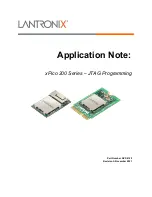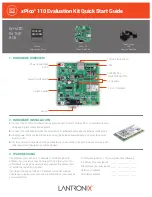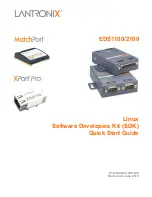
13-17-621 Page 122
A1.6
Warning
Airend
Discharge
Temperature
Input is above
the Warning
Limit
Airend discharge
temperature has
exceeded the warning
limit and approaching the
maximum limit for safe
operation of the
machine.
Check the temperature warning setting to ensure
that it is not set too close to the normal operating
range of the machine. Check site conditions for
elevated ambient temperature. Check the
condition of compressor cooling functions such as
thermal mixing valve and cooler. Check oil
condition and oil level. Examine airend for issues.
Review history of compressor discharge
temperature using the controller trends, data logs,
or site maintenance log. A slowly increasing trend
of the temperature may indicate overdue
maintenance such as cooler cleaning, while a
sharp increase may indicate a malfunction.
Perform adjustments, cleaning, or repair based
on the results of the investigation.
A1.7
Fault
Airend
Discharge
Temperature
Unsafe rate of
change on input
The rate of change of the
airend discharge
temperature exceeded
the maximum limit. The
controller identified a
sharp spike in the
temperature and shut
down the machine to
prevent damage.
This fault will occur when the compressor
discharge temperature is in the normal operating
range and a sudden increase of temperature has
been detected. Check the condition of
compressor cooling functions such as thermal
mixing valve and cooler. Check oil condition and
oil level. Examine airend for issues. Review
history of compressor discharge temperature
using the controller trends, data logs, or site
maintenance log. Perform adjustments, cleaning,
or repair based on the results of the investigation.
A1.8
Fault
Airend
Discharge
Temperature
input is shorted,
check sensor
wiring
Discharge temperature
sensor is faulty or the
wiring to the sensor is
shorted.
Using the wiring schematic for the machine,
locate the discharge temperature sensor
connection to the controller. Check for any
shorted wires at the connector. Inspect the cable
for damage between the controller and the
sensor. Remove the cable connector from the
sensor and use a multi-meter to check the
resistance of the sensor and ensure that it is not
shorted. It is possible that the sensor may read
within range at room temperature but still be
faulty once exposed to an elevated temperature
or vibration. Replace or repair the wiring or
sensor depending on the results of the findings.
A1.9
Fault
Airend
Discharge
Temperature
Input is open,
check sensor
wiring.
Discharge temperature
sensor is faulty, the
wiring to the sensor is
broken, or the wiring or
connector is
disconnected.
Using the wiring schematic for the machine,
locate the discharge temperature sensor
connection to the controller. Check for
disconnected wires, plugs, or loose connections.
Inspect the cable for damage between the
controller and the sensor. Remove the cable
connector from the sensor and use a multi-meter
to check the resistance of the sensor and ensure
that it is not open (very high resistance). It is
possible that the sensor may read within range at
room temperature but still be faulty once exposed
to an elevated temperature or vibration. Replace
or repair the wiring or sensor depending on the
results of the findings.
A1.10
Fault
Airend Inlet
Pressure Input
is below the
Fault Limit
Airend inlet pressure is
too low to operate the
machine. Blockage on
the air filter or inlet valve.
Inspect inlet air filter, clean/replace as necessary.
















































